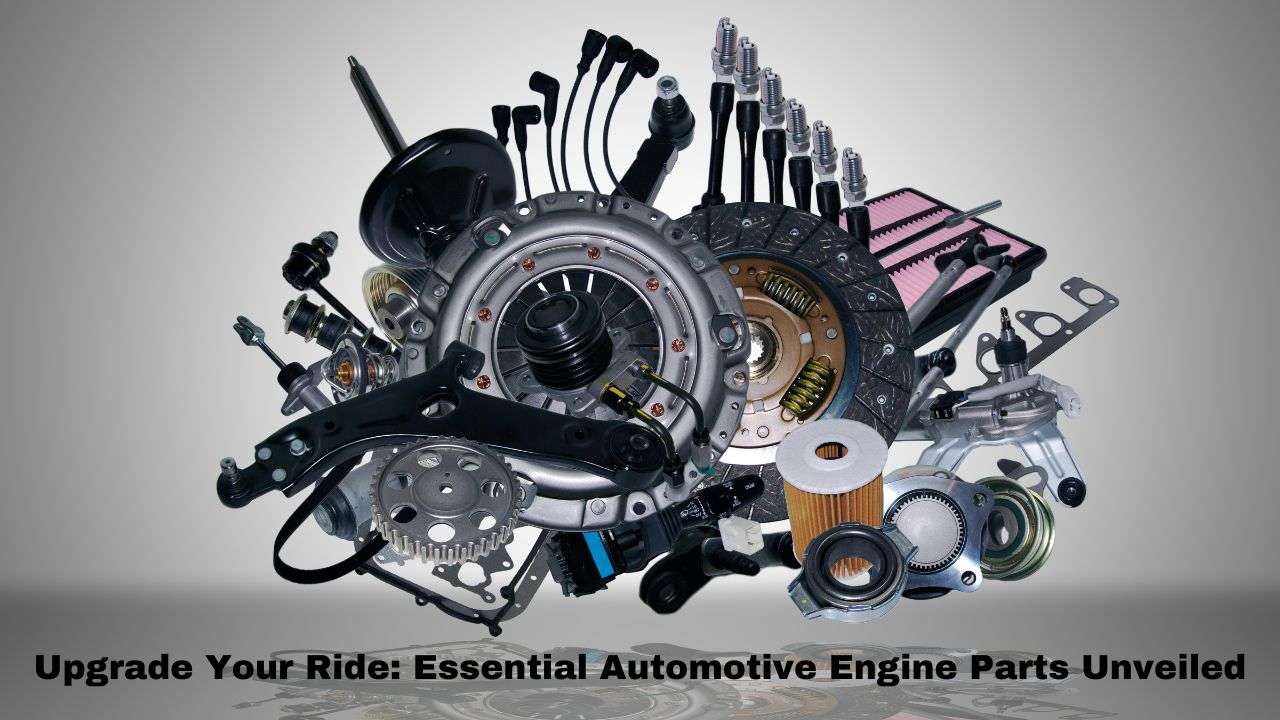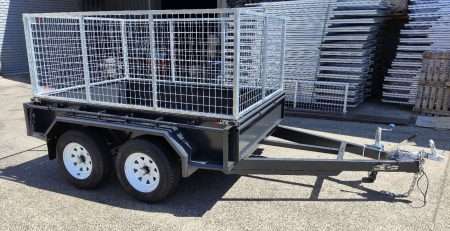
Upgrade Your Ride: Essential Automotive Engine Parts Unveiled
Understanding Automotive Engine Parts
The heart of any vehicle is its engine. It is an intricate system of automotive engine parts working together to convert fuel into power, propelling the vehicle forward. Understanding these components and the different types of engines available can help you maintain your vehicle better and diagnose issues when they arise.
The Basics of Engine Components
An engine is composed of several key components that work together to transform fuel into mechanical power. These include the pistons, valves, fuel injectors, and spark plugs, among others.
Pistons move up and down within the engine’s cylinders, compressing the air-fuel mixture and, through a spark from the spark plugs, igniting this mixture to generate power. Valves control the intake of the air-fuel mix and the expulsion of exhaust gases. Fuel injectors, as their name suggests, inject fuel into the engine at the right time and in the correct amount. Together, these components and others help the engine function efficiently and power your vehicle.
For a more in-depth look at these components, as well as additional parts like those in the engine cooling system, you can explore through our other articles.
Different types of engines
Engines come in various types, each catering to specific driving needs, budgets, and preferences. The most common types include petrol, diesel, electric, and hybrid engines (Cars 24).
Petrol and diesel engines are internal combustion engines that use either petrol or diesel fuel, respectively. They are the most common types of engines found in vehicles today. Electric engines, on the other hand, use electric power stored in batteries, making them a clean and efficient alternative. Hybrid engines combine the benefits of both internal combustion engines and electric motors, offering fuel efficiency and reduced emissions.
Different engines also have different reputations for reliability and performance. For instance, the Toyota 22R engine, produced from the early 1980s to the late ’90s, is known for its durability and was commonly used in off-road vehicles. The Honda B-Series engines, used in models like the Honda Civic and Acura Integra, are renowned for their longevity, performance, and lightweight aluminium blocks (Cars 24).
Understanding the different types of engines can help you make an informed decision when purchasing a vehicle or when considering an engine replacement. It’s important to consider your driving needs, budget, and preferences when choosing the type of engine for your vehicle.
Advancements in Engine Parts
As technology progresses, so too does the development of automotive engine parts. From the use of innovative materials like ceramics to the integration of advanced electronics and sensors, modern engine components have undergone significant transformations to improve vehicle performance and reliability.
Use of Ceramics in Engines
An interesting advancement in the world of automotive engines is the use of ceramics. Ceramics, particularly silicon nitride (Si3N4), have been successfully integrated into the valve system, replacing traditional metal alloys. This is largely due to their lightweight characteristic, which improves stability and speed in the engine shaft and valves (Source).
Furthermore, ceramic rotors in turbo-lag compressors decrease the delay by approximately 36% compared to their metal counterparts. This is because lighter ceramic shafts can accelerate and reach operational rotational speed faster than heavier metal ones (source).
Ceramic materials also have amazing wear resistance and low friction properties, making them perfect for automotive parts that require these characteristics. They do not need to be changed as often as their metal counterparts, which means maintenance requirements are lower.
Additionally, ceramic brakes offer superior performance and maintain higher friction values at high temperatures. They also have a very low weight, contributing to improved safety by enabling faster and more efficient stopping of the car (source).
Role of Electronics and Sensors
Electronics and sensors play a crucial role in modern automotive engines. Many of these electronic components utilise ceramics, further exemplifying the versatility of this material in the automotive industry. For instance, knock sensors use piezoceramic material to detect vibrations that occur before knocking in the engine, preventing damage.
These advancements in automotive engine parts are not only enhancing vehicle performance but also contributing to increased safety and reliability. For more information on maintaining your vehicle’s engine, check out our articles on engine coolant leaks, automotive engine cooling systems, and engine coolant replacement.
Common engine problems
Despite the durability and efficiency of modern automotive engine parts, certain common problems can still arise. Understanding these problems can help car owners maintain their vehicles better and seek timely repairs.
Overheating and Causes
One of the most common engine problems is overheating. There are numerous potential causes of this problem, including a broken thermostat, a failing cooling fan, or an engine coolant leak (Mark’s Auto).
The thermostat is a critical component in the engine’s cooling system. If it malfunctions, it can prevent the coolant from circulating properly, leading to overheating. In a similar vein, if the cooling fan isn’t functioning properly, it won’t be able to effectively dissipate the heat that the engine produces, which will cause overheating. Finally, a coolant leak can cause the coolant level to drop, leading to inadequate cooling and subsequent overheating of the engine.
To prevent these issues, it is essential to regularly check the functioning of the automotive engine cooling system and undertake necessary procedures like engine coolant replacement or an engine coolant flush as required. For a detailed understanding of the components involved, refer to our guide on engine cooling system parts.
Fuel pump issues
Fuel pump issues can also plague automotive engines. Problems with the fuel pump can lead to symptoms like misfires, rough idling, or decreased fuel efficiency. This can be due to a failing ignition system, including faulty spark plugs or ignition coils (Mark’s Auto).
Moreover, a malfunctioning oxygen sensor can lead to poor fuel economy, increased emissions, or engine hesitation. The sensor plays a crucial role in maintaining the optimal air-fuel mixture in the engine. If it malfunctions, the engine’s performance can significantly degrade.
Additionally, worn-out piston rings can cause excessive oil consumption in an engine, resulting in increased emissions and decreased fuel efficiency.
In all such scenarios, timely detection and engine cooling system repair can help prevent further damage and ensure the longevity of the vehicle’s engine. For specific component replacements, consult our guide on engine thermostat replacement.
Maintenance of Engine Parts
In the realm of automotive, the longevity of a vehicle’s engine parts is determined by a number of factors, chief among them being the quality of maintenance. Regular preventative maintenance is essential for prolonging the life of engine parts in a car.
The importance of regular check-ups
Just as regular health check-ups are crucial for maintaining human health, regular check-ups for your car’s engine are also vital for ensuring the longevity of the automotive engine parts. These check-ups can help identify potential issues early on, such as an engine coolant leak, which, if left unattended, can lead to more serious problems in the automotive engine cooling system.
Regular maintenance check-ups include tasks such as engine coolant replacement, engine coolant flush, and engine cooling system repair. It’s also advisable to regularly examine engine cooling system parts and engine cooling system components to ensure they are functioning optimally.
Additionally, certain components, such as the engine thermostat, may need replacement over time. You can learn more about this in our article on engine thermostat replacement.
Role of Quality Engine Oil
Quality engine oil plays a significant role in the maintenance of automotive engine parts. High-quality engine oil minimises friction between engine parts, which can prevent wear and tear in the long run. Furthermore, regular oil changes can help remove dirt and debris that could otherwise accumulate and cause damage.
Choosing high-quality engine oil and following the recommended oil change schedule can contribute significantly to the longevity of engine parts.
Remember, regular maintenance isn’t just about preventing issues; it’s about maximising the performance and lifespan of your vehicle’s engine. By understanding the importance of regular check-ups and the role of quality engine oil, you can help ensure the longevity of your vehicle’s engine parts.
The Impact of Driving Conditions
Driving conditions can have a significant impact on the performance and longevity of automotive engine parts. This includes factors such as extreme temperatures and stop-and-go traffic. Understanding these impacts can help drivers take the necessary measures to protect their engines and extend the life of their vehicles.
Effects of Extreme Temperatures
Extreme temperatures, both hot and cold, can put considerable stress on automotive engine parts. For instance, in hot conditions, the engine generates more heat, which can lead to overheating if the automotive engine cooling system is not functioning properly.
A malfunctioning thermostat, which is a key component of the engine cooling system, can lead to engine overheating. This can cause damage to other engine components, such as gaskets, seals, and cylinder heads. Christian Brothers Automotive. To avoid these issues, it’s recommended to regularly check the thermostat and consider an engine thermostat replacement if necessary.
In cold conditions, engine parts can contract and the oil can thicken, making it harder for the engine to start and run efficiently. Using a winter-grade oil during the colder months can help keep the engine running smoothly.
| Extreme Temperatures | Effect | Solution |
|---|---|---|
| Hot | Engine overheating | Engine coolant replacement |
| Cold | Difficulty in starting the engine | Use winter-grade oil. |
Impact of Stop-and-Go Traffic
Stop-and-go traffic can also take a toll on automotive engine parts. Constant acceleration and deceleration can lead to increased wear and tear on the engine and other components. For example, the constant need to speed up and slow down can put extra pressure on the engine, leading to increased fuel consumption and emissions.
In addition, the frequent stopping and starting can cause the engine to run at low speeds, which may not allow the automotive engine cooling system to function optimally. This could potentially lead to overheating and other related issues, such as an engine coolant leak.
To mitigate these effects, drivers can practice smooth acceleration and deceleration, maintain a safe following distance to minimise the need for hard stops, and ensure regular maintenance checks to keep the engine and other components in good working condition.
| Driving Conditions | Effect | Solution |
|---|---|---|
| Stop-and-Go Traffic | Increased wear and tear on the engine | Smooth acceleration and deceleration, regular maintenance checks |
Understanding the impact of driving conditions on automotive engine parts can help drivers take better care of their vehicles, leading to improved performance and longevity. Regular maintenance, including timely engine cooling system repair and the use of quality automotive engine coolant, is crucial to ensuring the optimal functioning of the engine under various driving conditions.
Longevity of Engine Parts
The lifespan of automotive engine parts is a key concern for any vehicle owner. Understanding the factors that affect the life expectancy of these parts, as well as tips for prolonging their lifespan, can help ensure a smoother, more efficient ride.
Factors Affecting Life Expectancy
Several factors can affect the life expectancy of automotive engine parts. The quality of maintenance, driving conditions, and the type of engine oil used all play a significant role (Rislone).
For instance, engine parts may wear out faster if the car is driven under severe conditions, such as extreme temperatures or stop-and-go traffic. Similarly, the age and mileage of a car can also affect the life expectancy of engine parts, as older vehicles may have more worn-out components.
| Factor | Impact |
|---|---|
| Quality of Maintenance | Higher-quality maintenance prolongs the lifespan. |
| Driving Conditions | Severe conditions can shorten lifespans. |
| Types of Engine Oil | High-quality oil can extend its lifespan. |
| Age and Mileage of the Car | Older vehicles may have a shorter lifespan for parts. |
Tips for Prolonging Lifespan
Prolonging the life of your engine parts is vital to maintaining the performance of your vehicle. Here are some tips to help you achieve this:
Regular preventative maintenance is essential for prolonging the life of engine parts in a car. Regular checks can help identify potential issues before they escalate, such as an engine coolant leak that may require engine coolant replacement or an engine coolant flush.
Quality Engine Oil: Choosing high-quality engine oil and following the recommended oil change schedule can contribute to the longevity of engine parts. This ensures the parts are adequately lubricated, reducing wear and tear.
Monitor Driving Conditions: Be mindful of the conditions under which you drive your car. Severe conditions can hasten the wear and tear on your engine parts.
Upgrade Parts: Consider upgrading older parts to newer, more efficient ones. For example, you could consider updating your engine cooling system components or opting for an engine thermostat replacement.
By understanding the factors that affect the longevity of automotive engine parts and taking steps to prolong their lifespan, you can help ensure a more efficient, smoother ride. Regular maintenance, choosing quality products, and being mindful of driving conditions can go a long way towards maintaining the health of your vehicle’s engine.
The Future of Automotive Engines
The future of automotive engines appears promising as advancements in technology and materials continue to evolve. These developments aim to improve engine performance, fuel efficiency, and environmental impact.
Developments in Design and Materials
The design and materials used in automotive engine parts have seen significant advancements in recent years. The use of computer modelling and simulation has allowed for more efficient and precise design of these parts. How Stuff Works.
Lightweight engine components, such as aluminium blocks and cylinder heads, are being increasingly used to improve fuel efficiency and reduce emissions. These materials are not only lighter but also have better thermal conductivity, contributing to improved engine cooling system performance.
Technology Enhancing Engine Performance
Technology has played a significant role in enhancing engine performance. The introduction of variable valve timing (VVT) technology, for instance, has improved engine performance by optimising the intake and exhaust valves’ timing. How Stuff Works. This technology helps to ensure that the right amount of air and fuel are present for combustion at the right time, leading to improved power and fuel efficiency.
Direct fuel injection systems have also brought about noticeable improvements in engine performance. These systems allow for better fuel atomization and combustion efficiency, resulting in increased power output and improved fuel economy. How Stuff Works.
Finally, the implementation of turbocharging and supercharging has increased engine power by compressing air into the cylinders, allowing more fuel to be burned and producing more power How Stuff Works. This technology can significantly enhance the performance of an engine, making it a popular choice for those seeking power and speed.
As we look to the future of automotive engines, it’s clear that advancements in design, materials, and technology will continue to revolutionise how we think about and interact with our vehicles. These developments not only improve the performance and efficiency of our cars but also help to reduce their environmental impact, making the future of automotive engines an exciting prospect.
Author
I am Rahatul Ashiq Tamal. Another author of Muscle Trailers. Muscle Trailers is a well-known trailer brand in Sydney, Melbourne & Adelaide

How to Mount a Spare Tire on Your Trailer: A Simple Step-by-Step Guide
Trailer service centers receive over 1 million phone calls and 1.3 million emails each year about trailer maintenance problems....

How to Fix RV Roof Leaks: Simple Roof Leak Detection Guide for Beginners
Did you know DIY RV roof repairs can cost under $50? But undetected leaks could lead to substantially higher repair...

Starting a Food Truck Business in Australia: From Trailer Selection to Launch
The Australian mobile food market has evolved into a billion-dollar industry. This makes a food truck...
